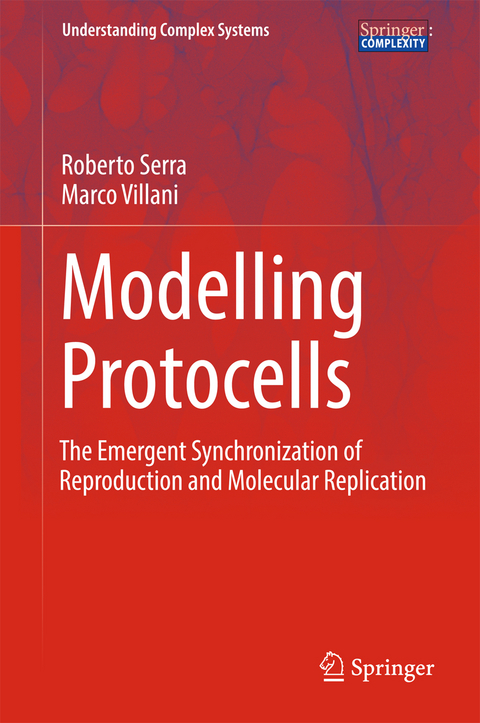
Modelling Protocells
Springer (Verlag)
978-94-024-1158-4 (ISBN)
The book is of interest for a broad range of scientists working in soft matter physics, chemistry and biology, interested in the role protocells may play on the development of new technologies with medical, environmental and industrial applications as well as scientists interested in the origin of life.
Roberto Serra is full professor of Complex Systems at the University of Modena and Reggio Emilia. He has previously been the Head of the Environmental Research Centre of the Montedison industrial group, the President of the Italian Association for Artificial Intelligence AI*IA and the Chairman of the Science Board of the European Centre for Living Technology. His main research interests, besides protocells, concern the dynamical modelling of Complex Systems, with applications to gene regulatory networks and cell differentiation, the analysis of their organization and the dynamical systems approach to Artificial Intelligence. He is the author or editor of eight books and of about 160 papers in international journals and conference proceedings with peer review. Marco Villani is associate professor of Computer Science at the University of Modena and Reggio Emilia and a fellow of the European Centre for Living Technology. His main research interests, besides protocells, concern the dynamical modelling of Complex Systems, with applications to gene regulatory networks and cell differentiation, the analysis of their organization and the simulation of social systems. He is the editor of three books and of about 100 papers in international journals and conference proceedings with peer review.
Foreword.- Introduction.- About protocells.- Why modelling protocells.- Collective self-replication.- Self-replication in a vesicle.- Self-replication in a reproducing protocell.- Generic properties of dynamical models of protocells.- Introduction. -Generic properties of biological systems: data.- Generic properties of biological systems: concepts.- What shall we model.- Dynamical models of protocells and synchronization.- Simplified surface-reaction models of protocells.- Synchronization in surface reaction models.- Several linearly interacting replicators.- Several interacting replicators with nonlinear interactions.- Internal reaction models.- Models of self-replication.- Introduction.- Autocatalytic sets.- The properties of some replication models.- Products and substrates.- Reflexive autocatalytic food-generated (raf) sets.- A stochastic model of growing and dividing protocells.- Semipermeable protocells.- The role of active membranes.- The effects of passive membranes.- Coupled dynamics of rafs and protocells.- Maintaining novelties.-A comment on evolvable populations of protocells.- Conclusions, open questions and perspectives.- Introduction.- The hypothesis of spontaneous fission and synchronization.- The formation of self-sustaining autocatalytic cycles.- The role of membranes.- A virtual laboratory.
| Erscheinungsdatum | 16.08.2017 |
|---|---|
| Reihe/Serie | Understanding Complex Systems |
| Zusatzinfo | 33 Illustrations, color; 13 Illustrations, black and white; XV, 182 p. 46 illus., 33 illus. in color. |
| Verlagsort | Dordrecht |
| Sprache | englisch |
| Maße | 155 x 235 mm |
| Themenwelt | Mathematik / Informatik ► Informatik ► Theorie / Studium |
| Naturwissenschaften ► Biologie ► Evolution | |
| Naturwissenschaften ► Physik / Astronomie ► Angewandte Physik | |
| Naturwissenschaften ► Physik / Astronomie ► Theoretische Physik | |
| Naturwissenschaften ► Physik / Astronomie ► Thermodynamik | |
| Technik ► Umwelttechnik / Biotechnologie | |
| Schlagworte | abiogenesis • autocatalytic cycle • Autocatalytic Set • Cell Evolution • Chemostat • composome • Emergent Properties • Genetic Memory • Internal Reaction Models • Kauffman random topologies • Lipid Vesicles • Models of Replicators Dynamics • Origins of life • Protocell Architectures • RAF sets • Reflexive Autocatalytic Food-Generated sets • Surface Reaction Models • Synchronization |
| ISBN-10 | 94-024-1158-5 / 9402411585 |
| ISBN-13 | 978-94-024-1158-4 / 9789402411584 |
| Zustand | Neuware |
| Haben Sie eine Frage zum Produkt? |
aus dem Bereich


